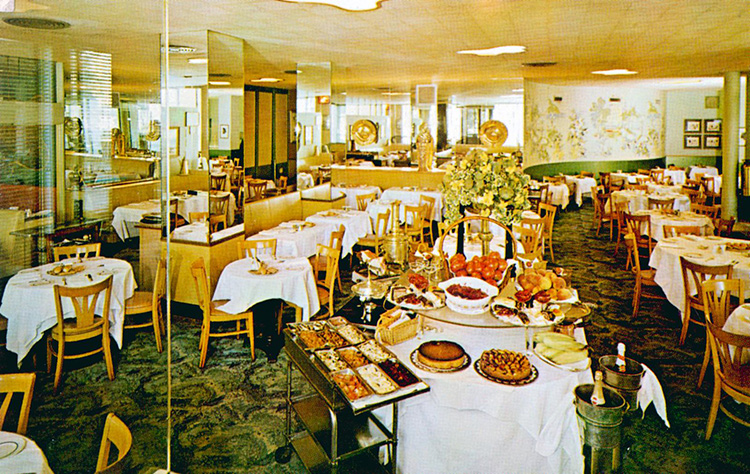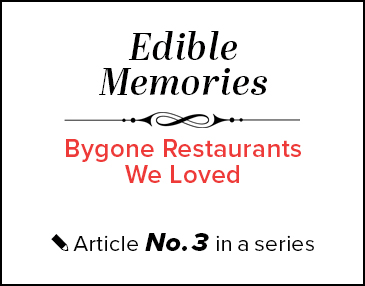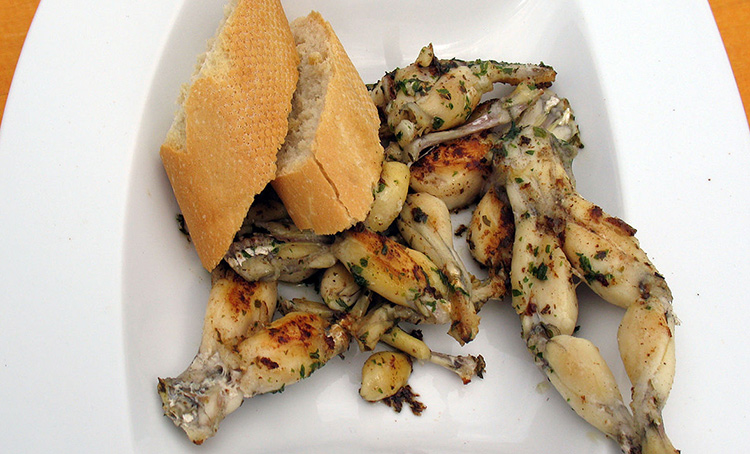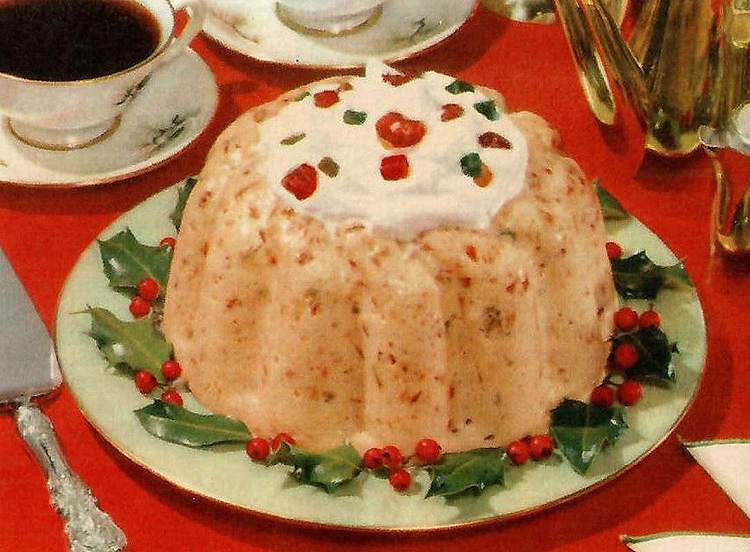ENTER YOUR EMAIL TO RECEIVE OUR WEEKLY NEWSLETTER
Edible Memories: At Le Café Arnold, Chicken Flambé and V8 juice
European elegance—slightly ersatz—at a French establishment that was once a mainstay on Central Park South
By George Blecher

 April 19, 2024
April 19, 2024
Mealtimes at home were tense. My mother worried that her cooking, her hovering, and the Mallomars I scarfed down between meals were ruining my appetite.
She was right on all counts.
But eating out was different: For us as a family, Saturday lunches at a restaurant in the city were among our happiest times.
In the decade and a half after World War II, even the best New York restaurants were affordable, accessible—you didn’t have to reserve weeks in advance or pay a fortune in parking. We would bathe and dress up, drive for 20 minutes from the Bronx into Manhattan, and sit in surroundings as carefully planned as stage sets: elegance came more easily in those days. Chandeliers, inevitably. Huge vases filled with branches of flowering trees. Blindingly white tablecloths and napkins stiff with starch.
And the patrons in those restaurants! Tall, well-dressed men pulling out chairs for their ladies. Prosperous, fleshy families—the boys wearing bowties, the girls in dresses puffed up by crinolines. Solitary men or women nursing cocktails in the shadows, their cigarettes smoldering.
The best of the best, at least for us, was a place called Le Café Arnold at 240 Central Park South, just off Columbus Circle. Do you remember it? (Nowadays the space is occupied by Marea, an upscale Italian seafood restaurant.) My father was an immigration lawyer—a profession that hadn’t existed before the war—and among his clients were Café Arnold’s chefs and waitstaff, many of them Eastern European concentration-camp survivors. From the moment we stepped into the vestibule, we were treated with quiet dignity, practiced deference; they wanted us to feel special and knew how to make it happen.
The place itself was stylish, tasteful. Blond-wood furniture, mirrors interspersed with large reproductions of Brueghel feasts, deep carpets with forest designs, food carts crowded with cakes and bowls of custardy, meringue-topped desserts. It was like dining on a cloud.
The waiters had a slightly military air: black trousers, short white jackets with square shoulders, linen napkins draped over their left forearms. Yet the headwaiter was a big bear of a man with thinning gray hair and a warm, slightly ironic smile. You sensed that he’d been through plenty, and survived.
Then there was M. Arnold himself. According to the Internet, his name was actually Arnold Grass, and with a partner he started the restaurant (he was described on restaurant postcards as “host to the discerning”) in 1940—the same year that the Art Deco high-rise it occupied was built. I remember my father saying that M. Arnold, a.k.a. Grass, was something of a poseur. Around 1:00 in the afternoon, dressed in slippers, a black silk bathrobe, and a foulard, he descended from his penthouse apartment. Cigarette in a holder, his eyes a bit heavy-lidded, he shuffled through his domain on the carpet’s deep pile, not only the proprietor of Café Arnold but its resident genie. Every inch of the place was his, his bearing seemed to say; without M. Arnold there could be no Café Arnold.

Buttery, garlicky frogs’ legs, a favorite at Café Arnold.
. . . . . . . . . . . . .
The restaurant called itself a bistro, and that was accurate; we’re talking about an era in which haute cuisine hadn’t really rooted itself in the U.S. yet. Arnold’s cuisine—there’s a 1950s menu for sale on ebay—wasn’t so different from a comparable bistro’s today: plenty of fish and fowl dishes, and even some decidedly humble items like melon (in season) and V8 vegetable juice.
But there was also more exotic fare—an assortment of innards from kidneys to sweetbreads to tripe to brains, smoked eels, chicken flambé au brandy, and for me, the prize: frogs’ legs! How strange and Neanderthal even to type those words in 2024, and think of what they describe! But as squeamish an eater as I was at home, at Café Arnold I was the world’s most intrepid foodie: Give me buttery, garlicky frogs’ legs, Rock Cornish game hen, Crêpes Suzette—the most rakish, outlandish items on the menu!
All the main courses on that 1950s menu cost around $4.50—in contemporary terms, around $47. Did M. Arnold give us a discount? Was that part of his practiced deference, or were my parents just out on a splurge? I’ll never know.

Nesselrode pie: “A glob of snow transfigured by Santa Claus.”
. . . . . . . . . . . . .
My favorite dish has since fallen into culinary obscurity (although Petee’s Pie Company on the Lower East Side and in Brooklyn is said to make a version from time to time): Nesselrode pie. Somewhere between a custard, a pudding, and pure fluff, it combined egg whites, rum or brandy, chestnut puree, candied fruit, and dark-chocolate shavings into something that looked like a glob of snow transfigured by Santa Claus. Pure texture. Pure sweetness. Pure joy. (It was apparently named after a Count Nesselrode, a 19th-century Russian diplomat whose chef wanted to cook up something spectacular for his boss’s retirement.)
The headwaiter spooned out the Nesselrode pie from a crystal bowl with a flourish, and lobbed it onto my plate. I wanted to dive into it.
“Let him have as much as he wants,” said the headwaiter, who had survived the terrible war.
My parents did. I did. How could we not?
As we were leaving, I believe the headwaiter and maybe M. Arnold himself shook my father’s hand. We were not exactly royalty, but the closest thing, at that moment, that America had to offer. Not only us: All the prosperous patrons who could afford this slightly fake version of European elegance were proud of themselves, and had—more or less—a right to be.
George Blecher writes for The New York Times and for a number of European publications about American politics and culture. See georgeblecher.com
Enjoy more of George Blecher’s stories on NYCitywoman.com:











